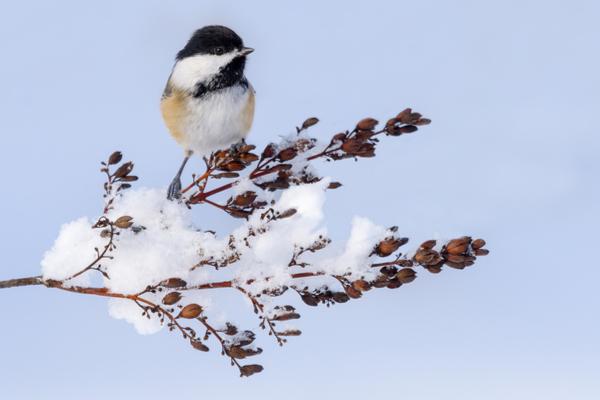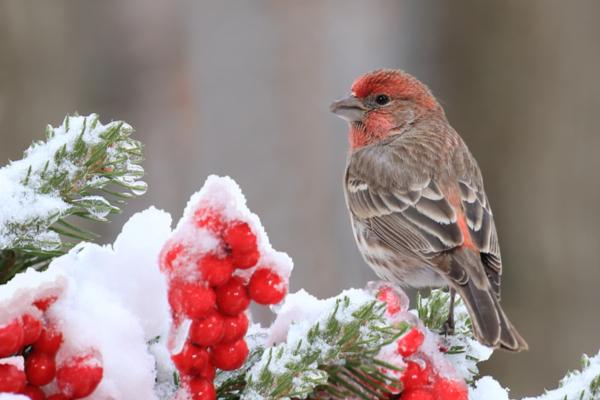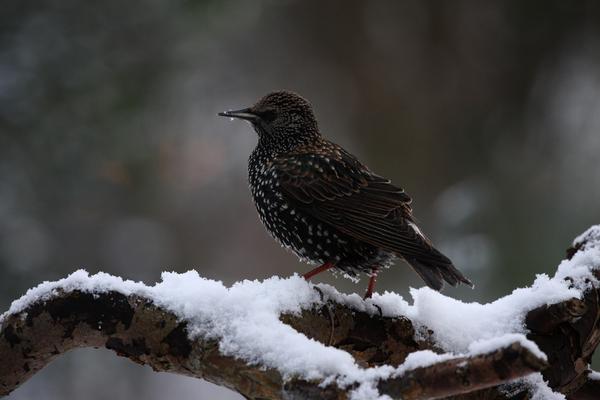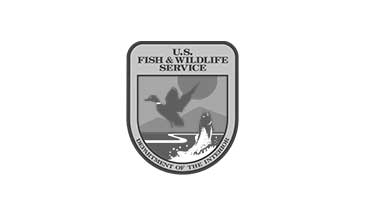By November, seeing birds in your yard every day starts to feel a little strange. Aren’t they worried about the cold? As winter draws closer, and it gets even weirder. Those birds hanging around in the snow don’t seem eager to get a move on at all. In fact, they seem perfectly comfortable hanging around with you! There are a surprising number of common US birds that never migrate for the winter. Unfortunately, many of these birds just so happen to also be common pest birds. Instead of flying south to trouble someone else, these pests stay right here to bother you all year long:
House Sparrows
House sparrows are small (5-7 inches) compact birds with large round heads, short tails, and a stout bill. Male house sparrows have bright, striped reddish-orange, brown, white, and black plumage and pale grey underbellies. Female house sparrows are more uniformly pale brown and grey. The house sparrow is one of the most common and widespread songbirds in the world today. You can find them pretty much wherever people live, especially in major metro areas and suburbs. House sparrows are appropriately named, because they tend to keep close to people’s homes. They’ll nest in just about any eaves, ledges, gutters, or even vents they can find. House sparrows eat by foraging small nuts, seed, and insects, usually from the ground. They keep warm by staying near windbreaker shelter, puffing up their feathers for insulation, and nesting in groups. House sparrows are commonly considered a minor nuisance pest, and you may deal with them all year.
Black-Capped Chickadees
The black-capped chickadee is a very small (4.7-5.9 inch), plump songbird that never migrates for winter. Their name refers to the jet black plumage cresting their heads. They also have a distinct white stripe running from their bills around their necks. Black-capped chickadee’s wings are grey with white edging, and their underbellies are cream-colored to white. Adult black-capped chickadees tend to be about as round as they are long, giving them a distinctive circular appearance. Black-capped chickadees are most common in the northern half of the US, but they have a very wide distribution. In fall, Black-capped chickadees pair up to mate. By winter, several pairs begin to nest together and form a flock. These flocks help the chickadees stay warm during cold months. Black-capped chickadees are opportunistic and highly-adaptable foragers. During summer they feed mostly on small insects, but during winter they switch to berries and seeds.
House Finches
House finches are small (5.1-5.5 inch), thin birds with long heads and short wings. Adult males have distinct red plumage on their heads and upper breasts, though their wings are brown and black. Females are grey-brown or black with speckled white and brown underbellies. Both male and female wings and bodies have irregular brown or black streaks. House finches are highly adaptable and thrive all over the US, living wherever they can get food. Finches subsist almost exclusively on plant material. They’ll eat seeds, nuts, berries, leaves, fruits, and even stems and bark. In some parts of the American southwest, house finches will even eat cacti! This adaptability helps house finches survive winter. They’re also highly social birds who perch and flock together, especially during winter. House finches nest with their single mate in any convenient location near food. They’re a common resident of ledges and vents around homes, even during winter.






